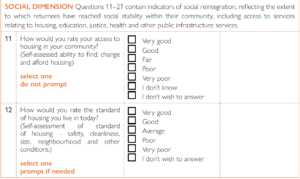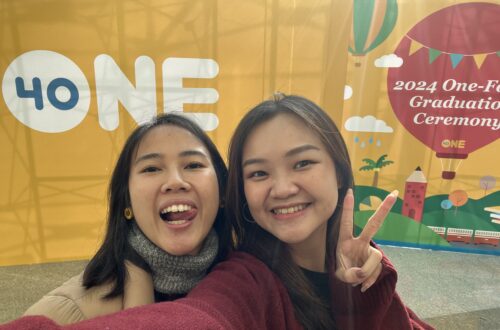One-Forty and the Career Center Vision
I’m now entering my third week in Taiwan, working with One-Forty while finalizing my project with IOM Indonesia. While I am thrilled with the crisis preparedness module I developed for Indonesian Civil Society Organizations (CSOs) abroad, that’s a topic for another day. What I really want to share is how IOM’s Reintegration Handbook has helped me launch my new project: creating One-Forty’s very own reintegration handbook for Indonesian migrant workers.
One-Forty has this amazing vision to create a Career Center for its migrant students and alumni. It’s not just a lofty idea either—this would be an actual physical booth inside their learning centre, where a career counsellor could meet with students and offer personalized guidance on building their future. One-Forty holds in-person classes once a month on Sundays (when most informal workers have the day off), so this Career Center could be a space for students to visit before or after classes, or during their breaks.
For continuity, my suggestion is that One-Forty should first create a handbook for whoever will manage the career centre. Staff change, people move on—this handbook would ensure that no matter who steps into the role, they’ll have a go-to resource.
I’m thinking of creating two versions of the handbook:
- An online document that is regularly updated with new resources and available services for career counsellors.
- A physical booklet that provides easy-to-understand information for the migrant students themselves.
The handbook would follow the same principles laid out in IOM’s Reintegration Handbook, focusing on the economic, social, and psychosocial dimensions of reintegration. It would guide the career counselor on how to support students holistically, considering all aspects of their lives and future aspirations.
Creating a plan for reintegration is a joint process. The case manager should always give returnees a realistic view of available assistance and help them plan for the point at which assistance will come to an end.
Reintegration Handbook: A Foundation for Supporting Migrant Workers
The Reintegration Sustainability: Survey for Returnees, found in Annex 4 of the Monitoring and Evaluation Tools, contains essential questions that shed light on the kind of needs migrants may have upon returning home. For example, questions like:
- “How satisfied are you with your current economic situation?”
- “Since you returned, how often have you had to reduce the quantity or quality of food you eat because of its cost?”
- “Are you able to borrow money if you need to?”
These types of questions help case managers assess the financial stability and challenges returnees may face. Similarly, the social and psychosocial dimensions also ask crucial questions, such as:
- “How would you rate your access to housing in your community?”
- “How often are you invited to or do you participate in social activities within your community?”



Reintegration Sustainability: Survey for Returnees
These questions are part of the broader, necessary understanding of reintegration, covering economic, social, and psychosocial reintegration sustainability. They provide a starting point to analyze the needs of migrant returnees and prepare actionable plans for their successful reintegration.
Gathering Resources: The Road Ahead
The next step in my journey is to centralize resources that are currently scattered across different organizations. Based on my research, there are already some solid programs out there like:
- BP2MI’s Perwira and Kawan PMI programs
- Migrant CARE and INKLUSI’s DESBUMI program (Australia-funded)
- IOM’s reintegration programs in three different locations
- Grassroots support from labour unions like SBMI
All of these are valuable resources, but they’re not easily accessible or centralized. My goal is to compile these resources through online research and reach out to these organizations to secure a direct contact person for each program. Fortunately, the Reintegration Handbook also provides useful tools like Annex 6: Stakeholder Mapping matrix and Annex 8: Service Mapping. Service mapping, especially, is essential to understand the various service providers available to returnees, categorized by dimension—whether economic, social, or psychosocial.
Right now, my main focus is on gathering service providers related to job placement, including:
- Job brokering entities
- Public and private employment services
- Special programs for the disabled
- Public work initiatives
These organizations produce labor market information, which is essential for returnees looking to get back into the workforce.
Discover more from Elhana S.
Subscribe to get the latest posts sent to your email.






Very good https://is.gd/tpjNyL
Xanh9vn, hmm… Never tried it personally, but I’ve seen it mentioned a few times. Do your research and see if it’s right for you. Good luck! Want to take a look?: xanh9vn